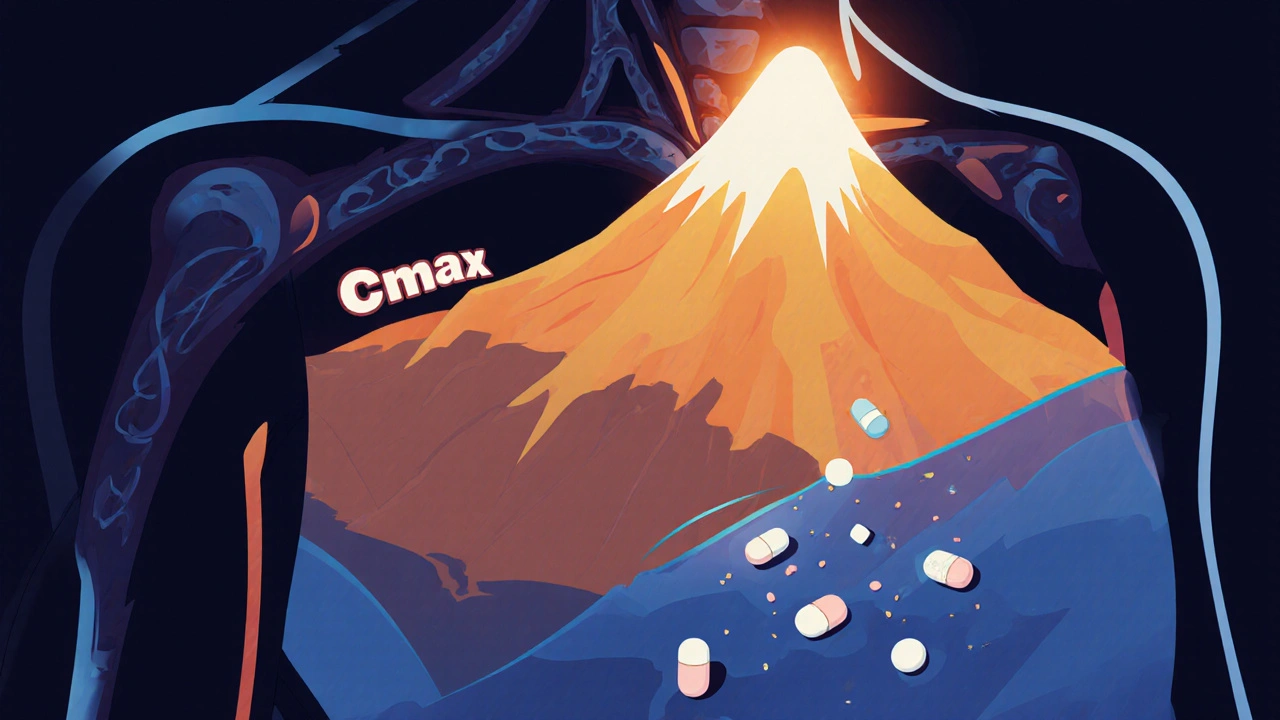When doctors talk about AUC, Area Under the Curve, a measure of total drug exposure in the body over time. It's not just a number on a lab report—it tells you how much medicine your bloodstream holds, and for how long. This directly impacts whether a drug works, causes side effects, or clashes with other meds. Think of it like filling a bathtub: AUC measures how full it gets and how long it stays full, not just how fast the water flows in.
AUC matters most when you're on drugs with narrow safety margins—like warfarin, a blood thinner where tiny changes in blood levels can cause bleeding or clots, or tacrolimus, an immune suppressant used after organ transplants. If your AUC is too high, you risk toxicity. Too low, and the drug doesn't work. That’s why doctors adjust doses based on age, kidney function, or other meds you're taking. For example, colchicine, a gout drug that becomes dangerous when mixed with certain antibiotics, has its AUC spiked by drugs like clarithromycin, leading to life-threatening toxicity. That’s not a coincidence—it’s pharmacokinetics in action.
AUC also explains why some generic drugs work differently than brand names, even if they contain the same active ingredient. Differences in how the pill breaks down or is absorbed can change the AUC, affecting how well it controls your condition. That’s why post-market studies track real-world outcomes—because lab numbers don’t always predict what happens in your body. If you’re on multiple meds, like aspirin, used for heart protection but risky for some, or ticagrelor, a stronger antiplatelet for heart patients, knowing how each affects your AUC helps avoid dangerous overlaps. Even something as simple as grapefruit juice can alter AUC by blocking enzymes that break down drugs, turning a safe dose into a risky one.
What you’ll find below isn’t just a list of articles—it’s a practical guide to how AUC shapes real decisions. From how missed doses change drug exposure, to why certain antibiotics can’t be mixed with painkillers, to how skin creams or migraine meds behave in your system, every post ties back to one thing: understanding what happens to your medicine once it enters your body. You don’t need a pharmacy degree to get it. You just need to know what to ask.

Cmax and AUC are the two key metrics used to prove that generic drugs work just like brand-name ones. Learn what they measure, why both are required, and how regulators ensure safety and effectiveness.
READ